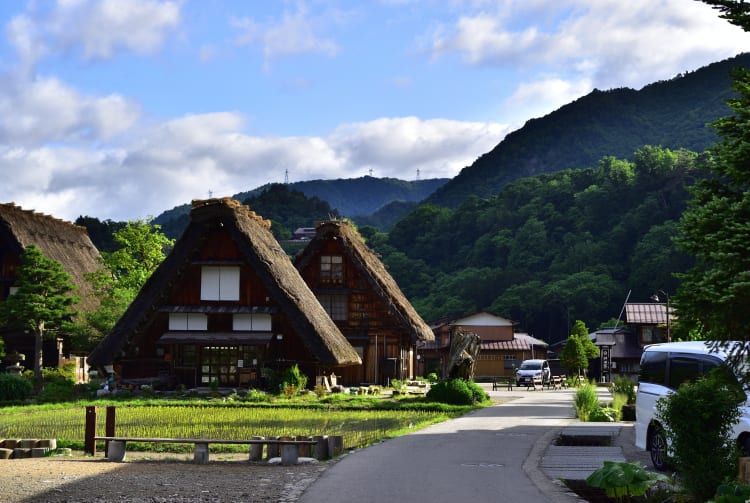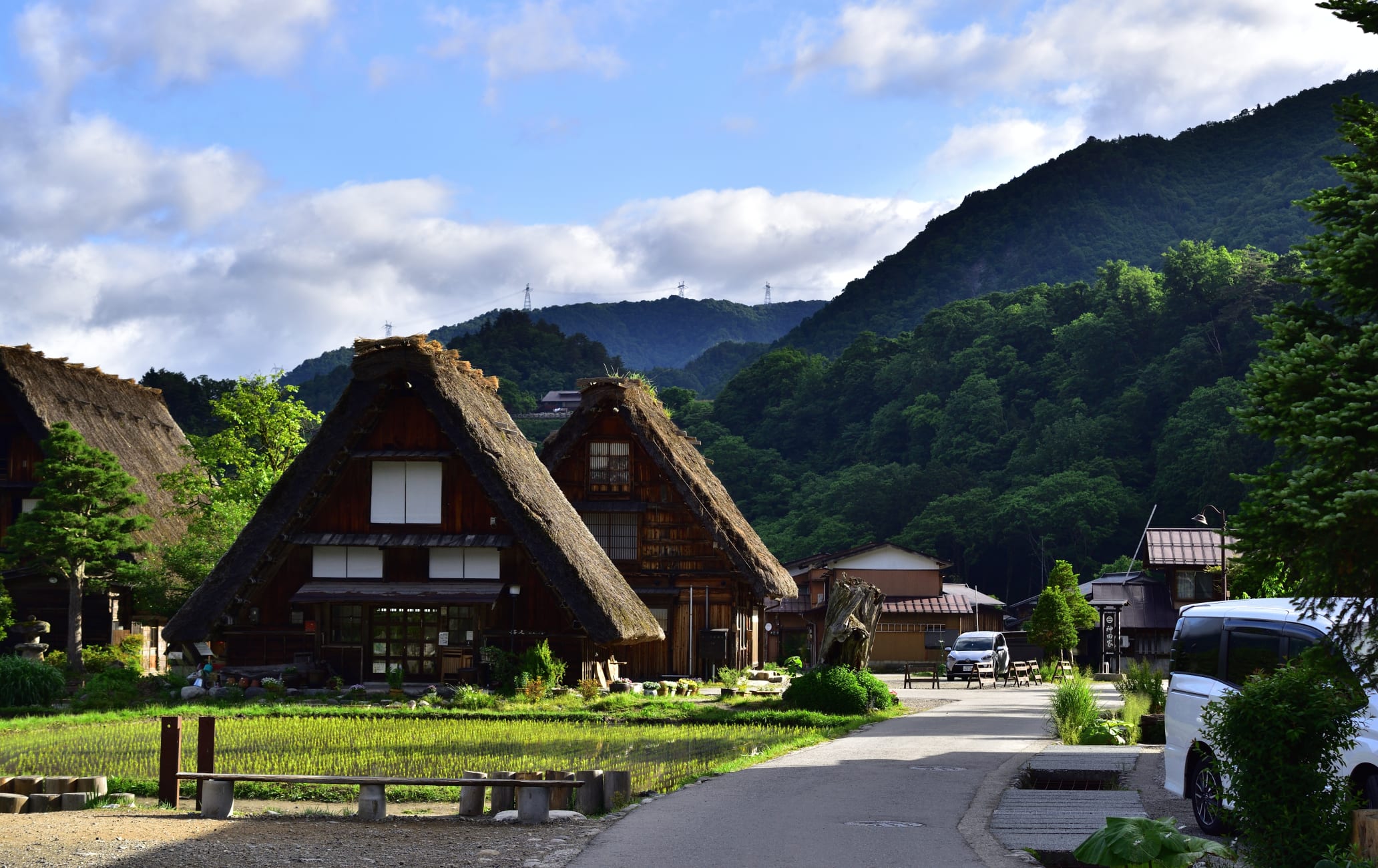Visit a fairy-tale village of traditional thatched-roof houses and step back to a bygone era
At the foot of the sacred Mt. Hakusan , Shirakawa-go is one of Gifu's must-visit destinations. Recognized by UNESCO as a World Heritage Site, this beautiful traditional village is the definition of picture-postcard perfect.
Don't Miss
- Staying overnight in an authentic Japanese farmhouse
- The traditional gassho-zukuri style houses, which were used to produce much of the silk in the Hida region
How to Get There
Shirakawa-go is best accessed by bus from Takayama.
From Nagoya and Gifu take the JR Takayama Line to Takayama. Buses to Shirakawa-go leave from the Takayama Bus Center and take around 50 minutes.

Start at Ogimachi
Shirakawa-go Ogimachi is the largest hamlet of gassho-zukuri style houses in Japan. The name gassho-zukuri literally means "like praying hands."
Each house is a masterpiece of carpentry. They are built without nails—every beam slots neatly into the next. The structure is so sound that these houses have stood since the 1800s, even in this earthquake-prone nation.

Slip into the past
The existing gassho-zukuri houses serve as museums, explaining the history of the region, the special architectural style, and features, and some of the key industries of Shirakawa-go. Several of these homes are guesthouses that offer lodging.
The gassho-zukuri village will transport you back to pre-modern Japan. Climb up to the Shirayama observatory, look out over the village, and take in views of a time gone by.

Gassho-zukuri Minkaen
This outdoor museum was built by relocating unused gassho-zukuri houses in Shirakawa-go to recreate the traditional way of life. It features functional buildings such as storerooms and a temple, as well as the ubiquitous houses. Here, you can see demonstrations of local crafts, some of which you can have a go at. There are restaurants and souvenir shops, making it an excellent place to rest weary legs.
Doburoku Festival
Doburoku is a local specialty alcohol. Doburoku is an unfiltered sake—a "home" brew that is illegal to produce in all but a few designated special zones.
In mid-October, you can partake of the drink while watching performances of the Shishi-mai lion dance.
Keeping house
Some of the houses are still residences and are therefore understandably closed to the public. Others, however, are open and are definitely worth checking out.
The Wada House is right by the bus stop, in the center of Ogimachi, surrounded by a perfect Japanese garden.
The Kanda House is believed to be more than 150 years old and contains writing on the roof frame by the original carpenter from about 1850.
The Nagase House was home to a family of doctors and has a display of Edo period (1603-1867) medical equipment that is fascinating and troublesome in equal measure.

Tajima House Museum of Silk Culture
Silk farming was one of the main industries in pre-modern Shirakawa-go, and this museum explains the history and process. The Tajima House is actually dedicated to reviving the traditional silk farming industry.

Myozenji Temple Museum
This former monk's residence next to the main temple has been turned into a museum of the temple's history since 1748. The temple itself is home to a large Buddha, and the bell tower and nearby yew tree are redolent of old Japan.

Glorious four seasons
Shirakawa-go rewards return visits, as the shifting seasons bring out different aspects of the town. From the bright cherry blossom through the verdant summer, the fiery autumn leaves and the silent, white winter, Shirakawa-go always looks splendid.



You can cover Shirakawa-go in a couple of hours, but to really soak in the atmosphere, imagine the timelessness of life in rural Japan, and lose the stress of contemporary living, you will need longer. Staying overnight in one of the lodging houses is highly recommended, but you will need to book in advance.


























































